Chemists reflect on two decades of change
These chemists all became members of the Royal Society of Chemistry in 2004, when Chemistry World was first launched. To mark our 20th anniversary, Phillip Broadwith asked them to look back at the last two decades of their careers in chemistry. The first 10 interviews are published here, with another 10 to follow later in the year.
Phillip Broadwith

Phillip Broadwith joined Chemistry World as a science correspondent in 2009, after finishing a DPhil at the University of Oxford, UK. He held various roles with the magazine before becoming business editor in 2013, taking responsibility for all the magazine’s industry-related content.
The idea for this series came from the realisation that I had joined the Royal Society of Chemistry as an undergraduate member just as Chemistry in Britain was reborn as Chemistry World.
Through the lens of 20 years as a member, reader and later editor, I have seen many changes in the magazine and in the wider chemistry landscape. And my conversations with the other members featured in this article have underlined the huge diversity of the chemistry community – in the activities it supports, and the lives of the people involved. I hope their stories are as inspiring to you as they have been to me.
My journey from science into journalism was prompted by a realisation during my PhD that I wasn’t really cut out for the pharmaceutical or agrochemicals industry career I had geared myself towards. I also wanted to expand my horizons beyond synthetic organic chemistry. I was fortunate that, soon after starting a graduate position at the RSC, a science correspondent job came up at Chemistry World.
Faced with learning an entirely new trade, I relied heavily on those around me to mentor me in the practical, ethical and legal aspects of the job. Their guidance gave me a standard to live up to and a solid foundation that I have tried to build on over the years, and pass on to new colleagues in turn.
It was – and remains – both exciting and daunting to realise I have privileged access to people doing some of the world’s most important research, or shaping the political and industrial landscape (not least the other participants in this article). That is tempered by the journalistic responsibility to question and challenge injustice and wrongdoing; sometimes treading difficult paths, and reporting on stories that some would rather we didn’t.
Perhaps the most fulfilling period of my career so far was during the Covid-19 pandemic. With heightened public demand for high-quality science reporting to cut through the barrage of information (and misinformation) spreading online, along with the excitement of the pharmaceutical industry’s breakneck efforts to develop treatments and vaccines, the job took on extra significance.
The world now faces an even greater challenge in preventing a climate disaster. Political mettle will be tested, alongside industry and society’s capacity to innovate and evolve. And chemistry will be at the heart of the transition. We are living in interesting times.
Martine Keenan
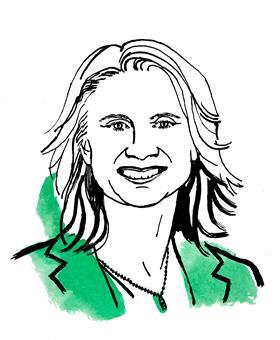
Martine Keenan is chief innovation officer at Australian venture-discovery firm SYNthesis Research, and chief operating officer at spin-out Anaxis Pharma. She has over 25 years’ experience working with small molecules across the pharmaceutical and contract R&D sector.
I was a few years into my journey at Eli Lilly in 2004, leading a programme in one of the central nervous system projects at Erl Wood, UK, and expecting my first child. A couple of years later we expanded the family again and I decided to take a career break.
I was concerned that I wouldn’t get back into the UK job market. We decided to seek our fortunes overseas in Australia, and I went as a spouse. I wasn’t really expecting to find anything in my field in Perth 20 years ago, but it turned out Epichem was looking for someone with my skill set for a contract they wanted to secure. I wanted to pick my career back up but work part time, so it was a very happy time.
Epichem was really one of the first wave of companies to realise the opportunity to meet a demand for outsourcing. It was founded by a superb synthetic chemist called Wayne Best, who wanted to build a company in his hometown that would provide excellent services globally in synthetic chemistry, and jobs for highly trained scientists. So we recruited a workforce of PhD organic chemists and built out the organisation to have a global client base.
There’s been a certain ebb of flow of interest in more bespoke contract services over that time. We had some loyal national and international clients that we connected with on a personal level – and that allowed us to find a niche. We were a high-quality chemistry outfit, but competitively priced compared to the US and UK markets, for example.
I enjoyed working at Epichem, but I really wanted to get back into R&D and drive the sector in Australia, which has boomed in recent years. I had skills in drug discovery and development, but I’d built up a corporate skill set as well, and I wanted to move into startups and venture capital.
At SYNthesis, we partner with academic groups and medical research institutes, particularly working in small molecule therapeutics, and provide them with the support to spin out those companies and take the ideas forward. We build ourselves around the existing academic science team, which is where having a foot in science and the corporate world helps because you can join those two sectors.
Australia is fantastic for early-stage research. There’s a lot of innovation and high impact publications, and there’s been a realisation over the last five to 10 years that research translation is the step that’s needed to build a sector in Australia.
There are people who have dedicated themselves to upskilling the workforce and providing incubators and accelerators. More recently this has been matched with government incentives providing support to the research institutes to translate and commercialise, but also supporting startups and spinouts with grants. I think there’s been a much more consolidated and organised approach, particularly in the last five years, and we’re really starting to see some great impact, as well as recognition of the great science that’s going on in Australia.
Eva McKiernan
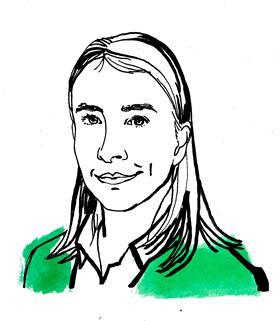
Eva McKiernan is a forensic investigator at Jensen Hughes based in Dublin, Ireland. She and the rest of the Forensics team are called on to investigate fires in a range of situations, from residential, commercial and industrial fires to vehicle and marine incidents and mechanical and engineering failures.
I’m often called an expert, but I don’t like to refer to myself that way. It gives the impression that you know everything, but that’s not possible. I need to stay connected to how science is developing because I never know what I’m going to come across in my next investigation.
At the moment I’m working on a historical cold case – a fire that occurred more than 40 years ago. I was considering what would be done differently now in terms of investigation. A lot of the ideas and techniques in forensic fire investigation haven’t really changed a lot, but one thing that has had a big impact is technology.
On the laboratory side, advances in analysis techniques and separation science mean we can get much more detail on individual components you can extract from samples. But even simple things like digital cameras – with a film camera you were restricted in the number of photographs you could take on a site, whereas now we can take as many as required. We can also use drones to get different perspectives on a site, or access areas of a damaged building that are not safe for human entry. So while the theory behind the fire investigation is the same, we can collect the data differently, analyse it differently and present it in a way people can see it.
My chemistry background usually gets used more in marine fire investigations because we may work as a team, rather than on our own as we might on, say, a house fire. One example is when I worked on a large containership fire. We looked at the different types of materials transported on board, their different properties and how they could interact with each other, whether they could ignite and what could happen when they do. We also looked at outside influences on those materials while they’re on board the ship – for example heat, weather conditions and wetting.
Of course, the materials that are important in investigations change over time – we don’t see many chip-pan fires nowadays, but we need to be familiar with new materials like lithium-ion batteries in scooters and electric vehicles, or solar panels on buildings. And the nature of those fires – the speed and how the fire develops – can be quite different. There’s also changes in the materials and techniques used by the global construction industry. Sometimes this is driven by big events like the Grenfell Tower disaster in the UK, but also because the industry is addressing environmental factors in the use of different construction materials.
In the past, information sharing was more restricted, it was in books or scientific papers. But while these are still essential forms of scientific communication, email and the internet has revolutionised how we can access developments in science and technology for input into investigations in real time.
Nathan Flood
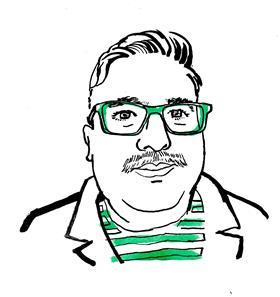
Nathan Flood is a principal specialist explosives inspector with the Health and Safety Executive (HSE) in Great Britain. His role involves a variety of activities around ensuring facilities and organisations manufacture, store and transport explosives in compliance with the regulatory framework, as well as investigating explosives-related incidents.
In 2004 I was just starting university. I made the decision early on that I wanted to study analytical chemistry, but when my degree finished in 2008, the financial crash was happening and I had a difficult six-month period where I struggled to find work. I got a temporary job as a school laboratory technician and then I did a teaching qualification and taught chemistry in two secondary schools, which I loved. But one thing it showed me was that I hadn’t quite finished learning myself.
I was interested in explosives – the chemistry is fascinating – so I did a master’s in forensic explosives and a PhD at Cranfield University, followed by postdoctoral research. Then, for various reasons, I decided on a career change. A colleague had applied to the HSE – he didn’t get that job, but he thought it would be right up my street. So I applied, and it’s probably the best decision I ever made.
The explosives sector in the UK had been in decline for a while, though. Most of the defence sector was privatised in the 1980s. Most fireworks are now imported from China. Most companies make small volume but high quality products – be that defence, or other pyrotechnic devices like squibs for the film industry, explosive bolts or smoke generators.
But in the past six or seven years there’s been a resurgence. Partly that’s down to world events – the war in Europe means there are munitions stockpiles to replenish, but also people are also looking at new technology for a variety of reasons like safety and sustainability.
Things like Resonant Acoustic Mixing – which could enable a formulation to be mixed inside a shell or other object. That means you’re dealing with smaller amounts of material at a time, as well as reducing the amount of hazardous waste, and the risk to people dealing with it. But it’s a new technology that’s not very well understood. Another one is flow synthesis – there’s a real drive for that at the moment, and people are also looking at using bioreactors to make explosives precursors.
Unfortunately, a lot of UK explosives manufacturers are still using processes that were developed over 60 years ago (because they work and are well-understood). But that means a lot of the people with experience of bringing explosive technology into mass manufacturing have either retired, or are no longer with us. There is knowledge and capability around these technologies in the pharmaceutical or general chemicals sectors, but bringing them into explosives – where there’s a very specific and different set of risks – is a real challenge.
These technologies show a lot of promise and there have been significant advancements in a short space of time. The next couple of years will be really exciting.
Niamh O’Connor
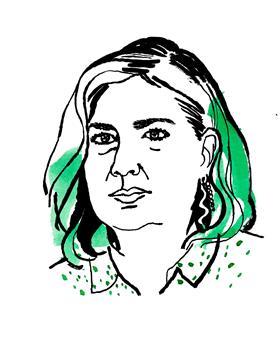
Niamh O’Connor is chief publishing officer at the Public Library of Science (PLOS), now living in Berlin, Germany. She has spent the last 20 years working in academic publishing at the Royal Society of Chemistry, the Biochemical Society/Portland Press and PLOS.
I had finished my PhD in 2002, and had a couple of short-term positions trying out different things. I was accepted onto the RSC graduate programme in 2004, expecting to be there for 12 months as an interesting experience, and it turned out I quite liked it.
My first job was working on Analytical Abstracts, in a room with lots of paper copies of journals from the RSC and different publishers. I would pick out relevant information from the papers that people might be searching for and add them into the database.
When you think of the changes that have happened with data and the way we think about and access information online, it was actually one of the most useful things I could possibly have done. Although I had no way of knowing that then!
One of the things that people say about scholarly publishing is that it moves very slowly. And I think that’s partly true, but actually a lot has changed in the last 20 years. Open access has become much more mainstream, although I think there’s still a huge amount of work to do.
I think it’s really important that that publishers are embedded in the communities that that we serve and that we should be a sustainable part of the research ecosystem and contribute to it rather than extracting from it. It’s vital we ensure that our communities are diverse, that we’re representing the voices of the multiplicity of people that are participating and that we make sure that people have the opportunity to be part of knowledge creation.
That’s why I think the move from open access to open science is so important – because open access could easily be just making the research outputs of high-income countries available to people in lower-income countries. But without the opportunity to participate in creating knowledge, you’re just moving where the barrier is, not taking it away.
If we really want to be intentional about addressing the power imbalances that have been built into a previous system, the only way to do it is to listen to people’s experiences and try to adapt. We need to recognise that we won’t get that right all the time, but if we listen when we get it wrong, we can try and come up with new ways to be inclusive.
There is no one answer that’s going to fix this for everybody. There are lots of different factors that tie together, and it’s very easy to say no one can move until somebody else moves. What we need to do is move as much as we can, and show that that’s possible. Then say ‘look, I’ve come this far. If you can come with me and move a little as well, then it’s possible to actually drive a change’.
Emma Dux

Emma Dux is a research technician for the Green Chemistry Centre of Excellence at the University of York, UK. She supports a broad range of laboratory activities across multiple research groups, including managing equipment, taking responsibility for laboratory safety inspections, and training new students.
I began my degree at the University of York in 2003. I had quite a tough time as an undergraduate, as I had problems with depression. The chemistry department at York, and my friends, were really great at supporting me through that. But I think I surprised a lot of people when, during my fourth year research project, I decided I really wanted to do a PhD.
Of course, a PhD can be quite stressful and challenging. But for me, in many ways, it was much better than being an undergraduate. Revising for exams was just not a healthy process for me, but there weren’t any exams in the PhD programme, and I was in a really great, supportive research environment. We would all pile off to the pub on a Friday evening, and sketch ideas for our research on the backs of beermats.
I helped one supervisor with some outreach lectures he was doing, and I really enjoyed demonstrating in the teaching laboratories. Then, as my PhD came to an end, I found I didn’t want to leave. So I started working in the teaching labs, and supporting other areas like the NMR service. Teaching labs can be hilarious at times – some of the stories that people come to you with.
After that I moved into research labs, in a building housing multiple research groups doing different things – some that was relatively familiar from my PhD, but others I didn’t know so well. So I learned a lot. I love being involved in research, but I realised I didn’t want to get too deep into any one problem. The way forward for me was to be supporting, helping out with a whole load of different projects.
Being a technician is a really broad role. There’s a lot of problem-solving, improvisation and troubleshooting. I might be helping someone who’s struggling to make some nanoparticles that I have made before, or taking apart some piece of kit – I got really familiar with the inner workings of our old gas chromatograph-mass spectrometer, although you can’t really do that so much with some of the newer equipment.
As I’ve moved into different labs over the years, it’s highlighted to me how research seems to have become a lot more focused on applications. There are fewer projects doing something just because it looks interesting, and to try an understand it. For example, it doesn’t feel like there are so many of the big organic total synthesis groups getting a ready supply of funding from the pharmaceutical industry to train students. There’s still money coming in from those companies, but it’s more tied to problems they specifically want solving. And that’s great, but it does sometimes feel like we’re missing out on some of the less obvious benefits that might come down the line in those exploratory projects.
Arunkumar Panneerselvam
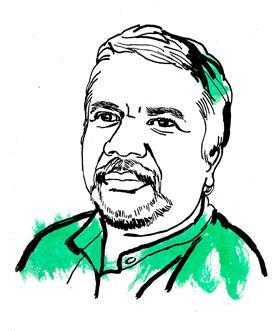
Arun Panneerselvam is a principal scientist in the department of food packaging technology at CSIR-Central Food Technological Research Institute in Mysuru, India. His research group is developing active and intelligent packaging materials for food products, for example to prolong shelf life or detect and indicate food spoilage.
In 2004 I began my PhD in Manchester, UK, working on thin film semiconductor materials with Paul O’Brien. It was a wonderful learning experience with excellent facilities to carry out research. I then went on to a couple of postdoctoral positions at University College Cork in Ireland and King’s College London, mostly looking at nanomaterials for energy storage and electronics applications.
I’d always planned to move back to India, which I did in 2013. I was offered a fixed-term position at the Indian Institute of Crop Processing Technology in Thanjavur (now the National Institute of Food Technology Entrepreneurship and Management). That was an eye-opener for me – I could see people using chemistry to understand and solve problems in food science and technology. So that convinced me to move into this area for my career.
Food packaging has two important roles: delivering food to consumers in the best possible condition and avoiding food waste. We can incorporate active materials that can absorb oxygen or release antimicrobials, for example, thereby extending the shelf life of food products. Similarly, intelligent packaging can provide real-time food quality to the consumer using freshness, time–temperature or RFID indicators.
Petroleum-based plastics dominate the food packaging arena worldwide. Hence, there is an enormous challenge surrounding plastic pollution. We have been producing fossil-based plastics for 70 years or so, but awareness of their environmental impact and the need for better waste management has come much later. Many of these packaging materials could be recycled, although some are more challenging than others – for example multilayer materials involving different polymers, or aluminised polymers and multilayer composites (combining paper, aluminium and plastics). Still, we need to make sure they’re segregated at the source, collected and cleaned properly so they don’t end up being discarded as trash.
Due to poor recycling rates across the globe and the non-biodegradable nature of most petroleum-based polymers, there’s an opportunity to develop alternative food packaging materials with lower environmental burden. One way is to look at biodegradable materials like paper or biopolymers – but then there’s a challenge to have performance on par with fossil-based plastics. We can add coatings to these materials to make them more oil- or water-resistant, but it’s then essential to make sure that those coatings are themselves biodegradable or compatible with recycling processes and won’t get leached into the food.
If we want more sustainable packaging, and a more circular economy, then we need to be aware of the whole lifecycle of the packaging materials. And the solutions will probably be different in different countries. We need to develop real-world technologies that are beneficial to society.
David Andrews
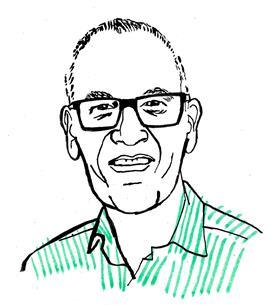
David Andrews has been working in drug discovery in the UK since 1990. Initially at Glaxo (later GlaxoWellcome, now GSK), he moved to AstraZeneca in 2003. He is now a senior director in oncology chemistry R&D, working on the early stages of discovering and developing new treatments for cancer.
After 13 years at GSK, I was approaching 40. I felt ready to take on a new challenge, and the opportunity to find out how AstraZeneca was working and maybe share some of my insights with them came at a very attractive time for me.
At that time, we were beginning to realise that traditional chemistry approaches could only take the industry so far, and it was apparent that we needed new approaches to reach more challenging targets and deliver the next wave of cancer drugs.
We had a very reductionist, quite chemocentric view of the world. We were often looking at proteins in isolation (as far as possible). But now, because of our growing understanding of the importance of protein complexes and protein–protein interactions in disease, we’ve seen a return to screening in much more biologically relevant media like whole cells or cell lysates. Especially for some of the new classes of therapies like protein degraders or molecular glues – you need that cellular context to reveal their utility.
We’re moving to a much more biology-centred view, where there’s much more rigour in target identification and validation. We’ve got tools like Crispr gene editing, and enhanced capability in things like proteomics to help with those aspects. But it also means that now we have far fewer targets to work on, and many of those are conventionally undruggable with small molecules. We sometimes say that our jobs as medicinal chemists nowadays is to fulfil the wildest dreams of our biology colleagues.
A lot has happened in the last 20 years in pharmaceuticals. But throughout that time, one of the big highlights has been the deep friendships I’ve built up. I consider myself very fortunate to have worked with some incredibly talented and very collegiate people within GSK and AstraZeneca, but also some pretty amazing collaborators in universities, both in the UK and further afield.
I truly believe chemistry is still a fabulous discipline to work in. We’ve learned to work in different ways, with more automation, more and different data, more distributed teams – including many companies outsourcing various activities. But I don’t think the philosophy of medicinal chemistry – that iterative approach of designing, making and testing – has changed all that much.
Lyndsey Mooring
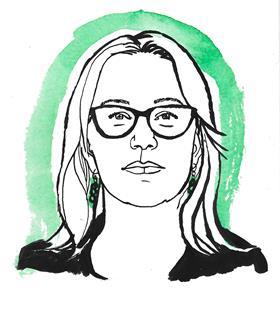
Lyndsey Mooring leads the International Development Office and heads the Fusion Industry Programme at the UK Atomic Energy Authority (UKAEA). The UKAEA is a national laboratory, conducting public research into fusion energy and related technologies, as well as advising government on policy decisions around those technologies.
Throughout my career I have worked in a variety of different fields and environments, but I’ve always aimed to move where the science was interesting. I did a materials-focused PhD and fell in love with that side of research, and that has formed the basis of my career in academia, then industry and now in the public sector.
I did three postdocs in different groups – one doing oil and gas industry-funded research into nanomaterials, followed by nanocomposites and polymer materials for aerospace. I then decided to go into industry, because it felt like there were fewer and fewer options available in terms of academic roles.
I’ve worked in startups and spinouts, large UK manufacturers and multinationals, doing different things. But it was always focused on manipulation of materials, at the atomic or molecular level, to influence their performance in bigger products or structures – particularly in regulated or harsh and extreme environments, whether that’s medical, pharmaceutical, personal care or aerospace.
I think across all those sectors, the ways of working have evolved over 20 years and there’s much more a focus on multifunctional teams, delivering in a project and programmes environment, bringing together cross-sector research. I think that is different to when I was first entering the world of work, and I think it’s for the better.
Setting up, being in and leading those kinds of teams – where there’s diversity of problem solving, bringing together different disciplines, different trainings, different viewpoints – really excites me. In my first industrial placement I was surrounded by chemists, but now I’ve worked in many places where I’ve either been employed as an engineer rather than a chemist or a scientist (sometimes because that’s their standard nomenclature). But I’m typically working with people that have been trained in a different way to me, which means that we bring better solutions.
When I created UKAEA’s Fusion Industry Programme over four years ago, one of the best parts was it meant I could build a first-class team across different disciplines. And that meant finance people, project management, all the way through to procurement, because I asked them to do an entirely different way of procuring research in industry that would benefit industry and UKAEA.
They stepped up and delivered that, which means that we’ve not just had successful partnerships with incumbent companies already working in fusion. When we run challenge competitions, half the bidders are new, and haven’t been involved with UKAEA before. They’ve not even necessarily done something for fusion – they didn’t know they had a solution that fusion would need. That’s been fantastic to bring in aligned sectors and companies.
Previously, I would say fusion was more in the sphere of physicists and engineers. Now, to make it commercial, and make sure there is an industry there to deliver fusion, chemists and other disciplines need to come in and help solve those problems. Having a big challenge, that the world population needs us to solve, is a very good driver!
Andreas Herrmann

Andreas Herrmann is a flavour and fragrance scientist working at DSM-Firmenich in Geneva, Switzerland. Before joining Firmenich in 1997, he studied chemistry at the University of Karlsruhe in Germany and the University of Strasbourg, France, and completed a PhD at ETH Zurich in Switzerland, working with François Diederich.
In 2004, I felt that all the relevant aspects of my area had been covered and it would be difficult to find new things. Now I realise how wrong I was – you can always find new things. Science always makes progress, and in my work one of the biggest changes I’ve seen in the last 20 years is in designing complex and dynamic systems.
My PhD supervisor once said to me ‘Mixtures are not interesting’. Back then there was more of a focus on having pure compounds and showing that they were pure. Now I think we have more awareness of complex, interacting systems. We talk about compound mixtures, mixture effects, synergies from mixture equilibria – and all that is relevant to my work in fragrances. Perfume is a mixture of compounds and the presence of one molecule can impact several other things. When we’re formulating a perfume, for example, we can deliberately take advantage of complex supramolecular systems.
My current work is developing long-lasting perfumes, and the approach we’ve taken is through profragrances. It’s the same idea as prodrugs in pharmaceuticals: we have molecules that are stable in the formulation, and then when the perfume is applied for use, the system responds to a change in the conditions – for example exposure to light – and that might cleave a bond and release the active perfume compound.
We are beginning to understand some of this complexity, but at the same time we have realised how little we actually know about to control or influence complex systems. We’re making some progress, but this complexity is still difficult to address. And now of course, we’re getting into digital systems and artificial intelligence – there’s a real opportunity to use those tools to process and digest the huge amounts of data and help understand complex systems.
Looking to the future, sustainability is – for me – one of the most important aspects that science and research in general will have to focus on addressing into the next decade and beyond. We must reduce the human carbon footprint in all its aspects. In my sector, this includes things like making sure products and processes are energy efficient, biodegradable and based on renewable sources of carbon, for example. It’s not a nice-to-have, it’s really a must-have now.

20 years. 20 chemists. 20 stories.
- 1
 Currently reading
Currently reading20 years. 20 chemists. 20 stories. Part 1
- 2
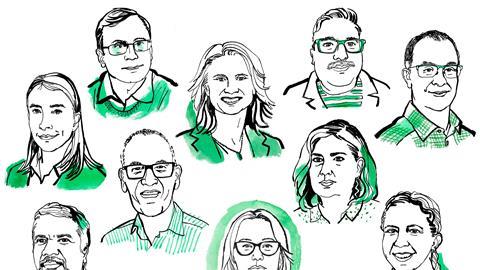





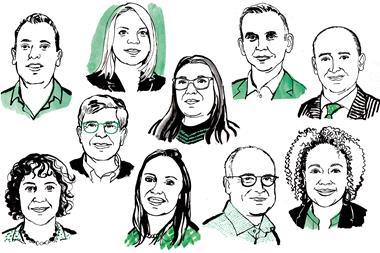











No comments yet